Roland JUNO-X
$1,356.99
Get ready to make music like no other with the Roland JUNO-X, featuring pro-quality sounds, innovative features, and ease of use.
Compare
Description
The Roland JUNO-X Synthesizer is a powerful electronic musical instrument that has been designed to meet the needs of professional musicians, DJs and producers. With a wealth of features and advanced sound generation capabilities, this synthesizer is perfect for any musician who wants to unlock their creative potential and create cutting-edge music.
The JUNO-X is a 49-key synthesizer that features over 1,500 sounds and 256 compatible patches, making it one of the most versatile synthesizers on the market. The instrument is designed to produce a wide range of sounds, including classic analog tones, cutting-edge digital sounds, and everything in-between. With its flexible and intuitive interface, the JUNO-X makes it easy for aspiring musicians to explore new musical ideas and create complex soundscapes.
One of the standout features of the JUNO-X is its powerful sound engine. The synthesizer is equipped with Roland’s famous SuperNATURAL technology that allows the instrument to produce incredibly realistic and dynamic sounds. This sound engine is capable of producing organic and realistic electric pianos, realistic strings, and vocal textures that are sure to impress any listener. Additionally, the JUNO-X features advanced polyphonic capabilities that allow players to create lush, layered sounds with ease.
The JUNO-X also offers a host of built-in effects and processors, including delay, reverb, chorus, and distortion. These features enable musicians to tweak their sounds and create unique sonic textures that are impossible to replicate with other synthesizers. The instrument also offers a range of studio-quality effects that can be used to mix and master the final track, making it a great tool for producers and DJs.
The JUNO-X is easy to transport, thanks to its lightweight and compact design. The instrument weighs just 11 pounds and measures less than 38 inches in length, making it ideal for gigging musicians who need to move their gear around frequently. The instrument also features USB connectivity and can be integrated with any computer-based DAW, making it easy to incorporate the JUNO-X into any studio or live setup.
In conclusion, the Roland JUNO-X Synthesizer is an excellent instrument that offers a wide range of features and advanced sound generation capabilities. It is especially useful for musicians who want to create cutting-edge music, thanks to its powerful sound engine, built-in effects, and processors. It is also easy to transport, making it a great option for musicians who gig regularly. Overall, the JUNO-X is an excellent investment for any musician who is serious about producing quality music.
Roland JUNO-X properties
| Product name |
Roland JUNO-X |
| Brand |
Roland |
| Type |
Synthesizers |
| Keys |
Yes |
| Number of Keys |
61 pcs |
| Drawbars/Sliders |
Yes |
| Pads |
No |
| Rotary Controls |
Yes |
| Modulation Wheel |
No |
| Pre-Programmed Rythms |
No |
| Pre-Programmed Songs |
No |
| Pre-Programmed Sounds |
Yes |
| Pre-Programmed Drumset |
No |
| Pre-Programmed Effects |
Yes |
| Built-In Tuner |
No |
| Portable |
No |
| Speakers |
Yes |
| Connections |
3.5mm (AUX), 6.3mm (1/4″RTS), Headphone, MIDI, MIDI Through USB, Microphone, USB, XLR |
| Colour |
Black |
| Power Supply |
Electrical Cable to Wall Socket |
Frequently Asked Questions:
What are the different types of sounds and instruments available on the Roland JUNO-X synthesizer, and how can I access them in the sound library?
The Roland JUNO-X synthesizer offers a wide range of sounds and instruments across its sound library. Here's an overview of the different types of sounds available on the JUNO-X synthesizer:
1. Analog Modeled Synthesis: This type of synthesis is based on the classic Roland analog synthesizers, such as the Juno series, Jupiter series, and SH-series. It offers authentic analog waveforms and filter response.
2. Digital Synthesis: This type of synthesis uses digital oscillators to create a wide range of sounds, including wavetable, PCM, and virtual analog synthesis.
3. Drum Machines: The JUNO-X includes a collection of classic drum machines, such as the TR-808, TR-909, CR-78, and more. These drum kits can be used to create rhythmic patterns or used as individual sounds in your compositions.
4. Sampled Instruments: The JUNO-X includes a collection of sampled instruments, such as acoustic pianos, strings, guitars, brass, woodwinds, and more. These samples are recorded at high quality and can be edited using the onboard sound editing features.
5. Effects: The JUNO-X includes a range of effects processors, such as reverb, delay, chorus, flanger, phaser, distortion, and more. These effects can be used to enhance your sounds and create unique textures.
To access the sound library on the Roland JUNO-X synthesizer, simply press the "BANK" button located in the lower left corner of the keyboard. This will bring up the sound browser, where you can browse through the different categories of sounds available on the synthesizer. You can also use the search function to find specific sounds or instruments by name or type. Once you've found a sound you like, simply press the "LOAD" button and it will be loaded into your sound selection.
How do I optimize the Roland JUNO-X's filter envelopes for a smooth and dynamic sound in my synthesized compositions?
Start by selecting a patch or creating a new one that uses the Roland JUNO-X's internal filter. This can be done either through the preset library or by navigating to the filter section of the synth editor. Make sure that the envelope mode is set to "low pass" for the cutoff frequency and "env" for the resonance. This will allow us to shape the character of our sound using envelopes. Next, adjust the attack and decay parameters of the filter envelopes. The attack time determines how quickly the filter responds to the input signal, while the decay time determines how long it takes for the filter to return to its original state after the input signal is removed. A longer attack time can result in a smoother sound, while a shorter one can create a more percussive or punchy effect. The decay time should be set based on the desired sustain and release of your sound. To achieve dynamic and expressive performances, use the JUNO-X's keyboard and modulation wheels to control the filter envelopes. Assign these controllers to the envelope parameters in the synth editor. This will allow you to shape the filter response in real-time as you play your synthesized compositions. To further refine the sound, consider using other synthesis techniques such as oscillator synchronization or ring modulation to create more complex textures and harmonics. These can be done through the synth editor or by selecting the appropriate options in the performance section of the JUNO-X. Finally, listen carefully to your sounds and adjust the filter envelopes until you achieve the desired smoothness and dynamics.
What advanced features does the Roland JUNO-X synthesizer offer for creating dynamic and expressive sounds?
The Roland JUNO-X synthesizer is packed with advanced features that allow you to create dynamic and expressive sounds. Some of these features include:
1. Phrase Pads: These are customizable sound snippets that can be triggered using the dedicated performance pads on the synth's front panel. They add an extra layer of texture and depth to your compositions. Chord Memory: This feature lets you store up to four chords in memory, allowing you to quickly switch between different harmonic progressions without having to play them out by ear. Super Saw 2 oscillator: This unique oscillator produces a rich, complex waveform that's perfect for creating powerful lead and bass sounds. It's also great for adding depth and texture to your pads and synth textures. D-Beam controller: This innovative feature allows you to manipulate the sound using your body movements. By waving your hands in front of the D-Beam sensor, you can control parameters like filter cutoff, delay time, and chorus depth. Tone Remain: This handy feature ensures that your sounds remain stable even when you switch between presets or make adjustments to the synth's settings. It's especially useful during live performances where quick transitions are critical. Multi-mode Filter: The JUNO-X includes a multi-mode filter with resonance, drive, and envelope control. You can choose from low-pass, high-pass, band-pass, and notch filter types to shape the sound according to your needs. Pattern Sequencer: This advanced feature allows you to create complex rhythmic patterns using the synth's built-in sequencer. You can also sync it with external devices using MIDI clock or USB audio/MIDI. These are just a few of the many features that make the Roland JUNO-X a powerful and versatile synthesizer for creating dynamic and expressive sounds. Whether you're a seasoned pro or just starting out, this synth has everything you need to take your music production to the next level.
How can I effectively utilize the new D-Beam controller on the Roland JUNO-X to create expressive and dynamic performances?
To effectively utilize the new D-Beam controller on the Roland JUNO-X and create expressive and dynamic performances, follow these steps:
1. Familiarize yourself with the D-Beam controller: The D-Beam is a motion sensor that responds to the movement of your hand. It's located above the keyboard and can be used to control various parameters in real time. Take some time to understand how it works and experiment with its capabilities. Assign functions to the D-Beam: In the JUNO-X, you can assign different functions to the D-Beam by going into the panel settings menu. Choose which parameters you want to control with the D-Beam and set the sensitivity level. This will allow you to make precise and expressive adjustments during your performances. Practice using the D-Beam: Start by practicing simple movements, such as waving your hand or making circular motions. As you become more comfortable, try incorporating more complex gestures into your playing. The JUNO-X has a "D-Beam Learn" function that can help you program and save your favorite D-Beam performances for quick recall during live shows. Experiment with different sounds: Different sounds will respond differently to the D-Beam, so take some time to experiment with various presets and see which ones work best with this feature. Some sounds may be more responsive than others, so try out a variety of patches until you find one that suits your playing style. Use the D-Beam in combination with other effects: The JUNO-X has a variety of built-in effects and modulation options that can be used in conjunction with the D-Beam to create even more expressive performances. Try combining the D-Beam with reverb, delay, or chorus effects to add depth and dimension to your sound. Practice playing dynamically: The D-Beam allows you to make real-time adjustments to various parameters, but it's also important to play dynamically by varying the intensity of your gestures. Try using the D-Beam to create subtle variations in pitch, filter cutoff, or effect levels as you play, rather than making sudden, drastic changes. Don't forget to practice safety: Remember to keep a safe distance from the JUNO-X while playing with the D-Beam, especially if you're using it in combination with other effects that might create unexpected feedback or distortion. Also, be aware of any other musicians or equipment nearby that could be affected by your gestures. By following these tips and practicing regularly, you can effectively utilize the D-Beam controller on the Roland JUNO-X to create expressive and dynamic performances that will impress audiences and fellow musicians alike.
What are the key differences between the SuperSaw and Supersaw Plus oscillators on the Roland JUNO-X, and how do they affect the overall sound quality of the instrument?
1. Improved Frequency Response**: The Supersaw Plus oscillator's advanced algorithm ensures that it maintains an even frequency response across the entire audible spectrum, resulting in a more detailed and refined sound. Enhanced Harmonic Content**: By using sine waves to simulate sawtooth behavior, the Supersaw Plus oscillator is able to produce a richer harmonic content than the standard SuperSaw, which contributes to its brighter and more complex tone. Better Low-End Response**: Due to its improved frequency response, the Supersaw Plus oscillator tends to have a more even low-end response compared to the standard SuperSaw, making it better suited for bass-heavy sounds. However, there are some potential downsides to using the Supersaw Plus oscillator:
1. Increased CPU Usage**: The advanced algorithm used by the Supersaw Plus oscillator requires additional processing power, which can lead to increased CPU usage and potentially impact the instrument's overall performance. Limited Tonal Flexibility**: While the Supersaw Plus oscillator offers a brighter and more detailed sound, it may lack some of the tonal flexibility offered by the standard SuperSaw, particularly in terms of its ability to produce extreme filter resonance. Ultimately, the choice between the SuperSaw and Supersaw Plus oscillators on the Roland JUNO-X depends on personal preference and the specific musical context. If you're looking for a brighter and more detailed sound with improved low-end response, the Supersaw Plus oscillator may be the better option. However, if you prefer a wider range of tonal variations and textures, the standard SuperSaw may still be worth considering. In conclusion, while both oscillators can produce excellent sounds, the Supersaw Plus offers several advantages in terms of sound quality, making it an attractive choice for those seeking to create bright and detailed timbres.
Before you buy Roland JUNO-X
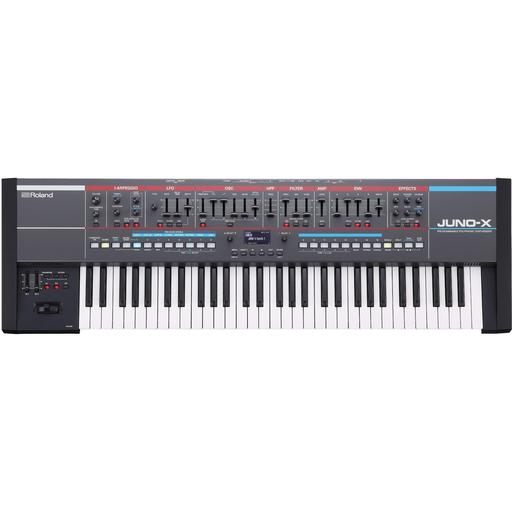



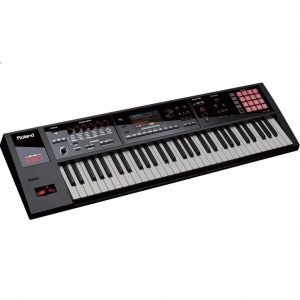
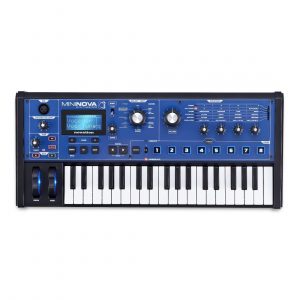
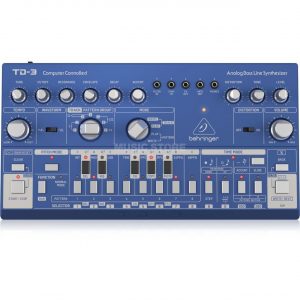
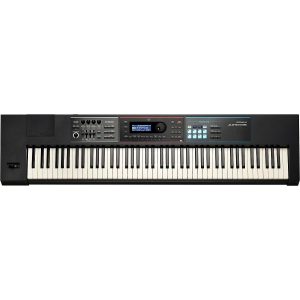
Reviews
There are no reviews yet.